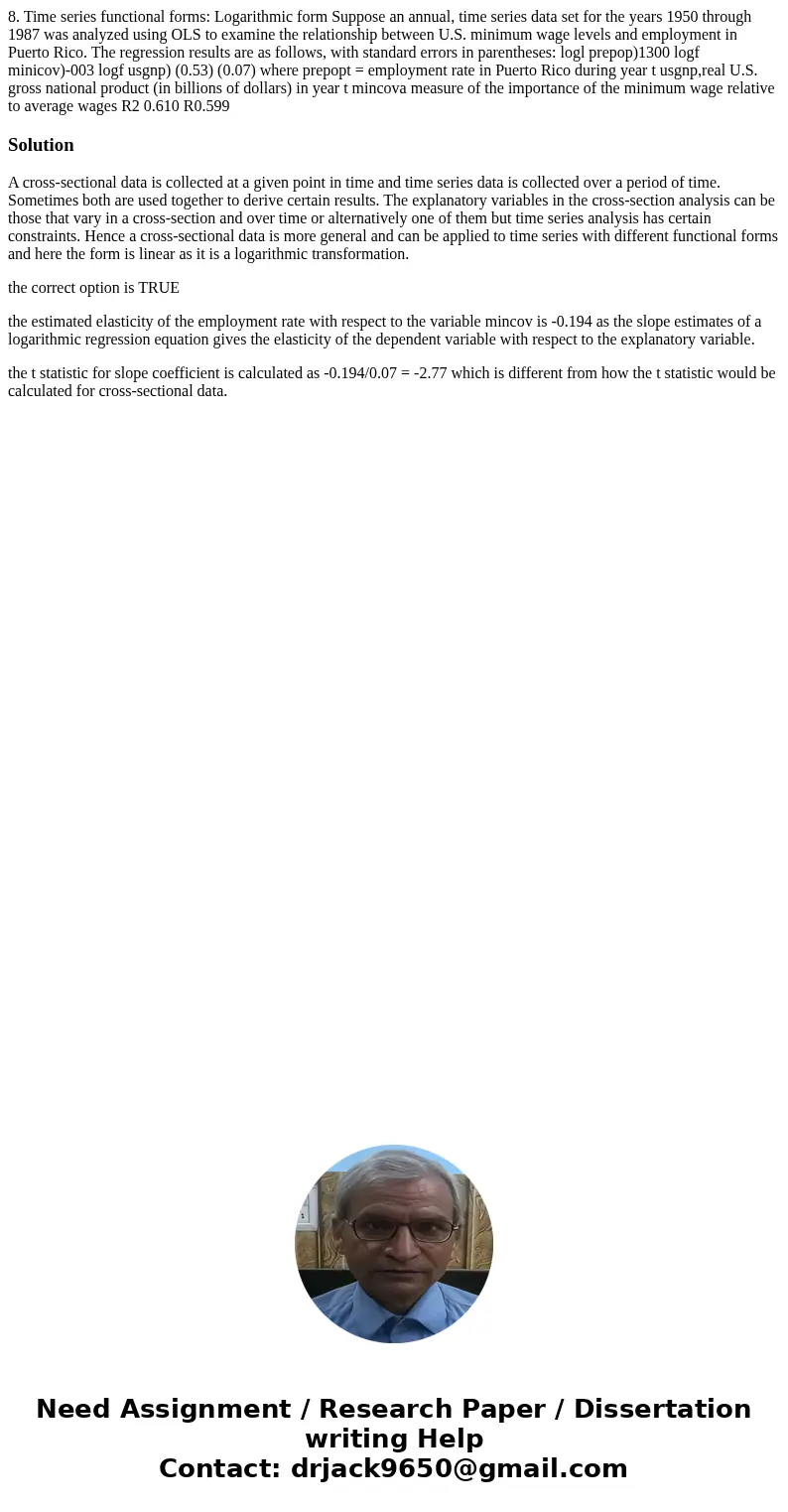8 Time series functional forms Logarithmic form Suppose an a
Solution
A cross-sectional data is collected at a given point in time and time series data is collected over a period of time. Sometimes both are used together to derive certain results. The explanatory variables in the cross-section analysis can be those that vary in a cross-section and over time or alternatively one of them but time series analysis has certain constraints. Hence a cross-sectional data is more general and can be applied to time series with different functional forms and here the form is linear as it is a logarithmic transformation.
the correct option is TRUE
the estimated elasticity of the employment rate with respect to the variable mincov is -0.194 as the slope estimates of a logarithmic regression equation gives the elasticity of the dependent variable with respect to the explanatory variable.
the t statistic for slope coefficient is calculated as -0.194/0.07 = -2.77 which is different from how the t statistic would be calculated for cross-sectional data.

 Homework Sourse
Homework Sourse